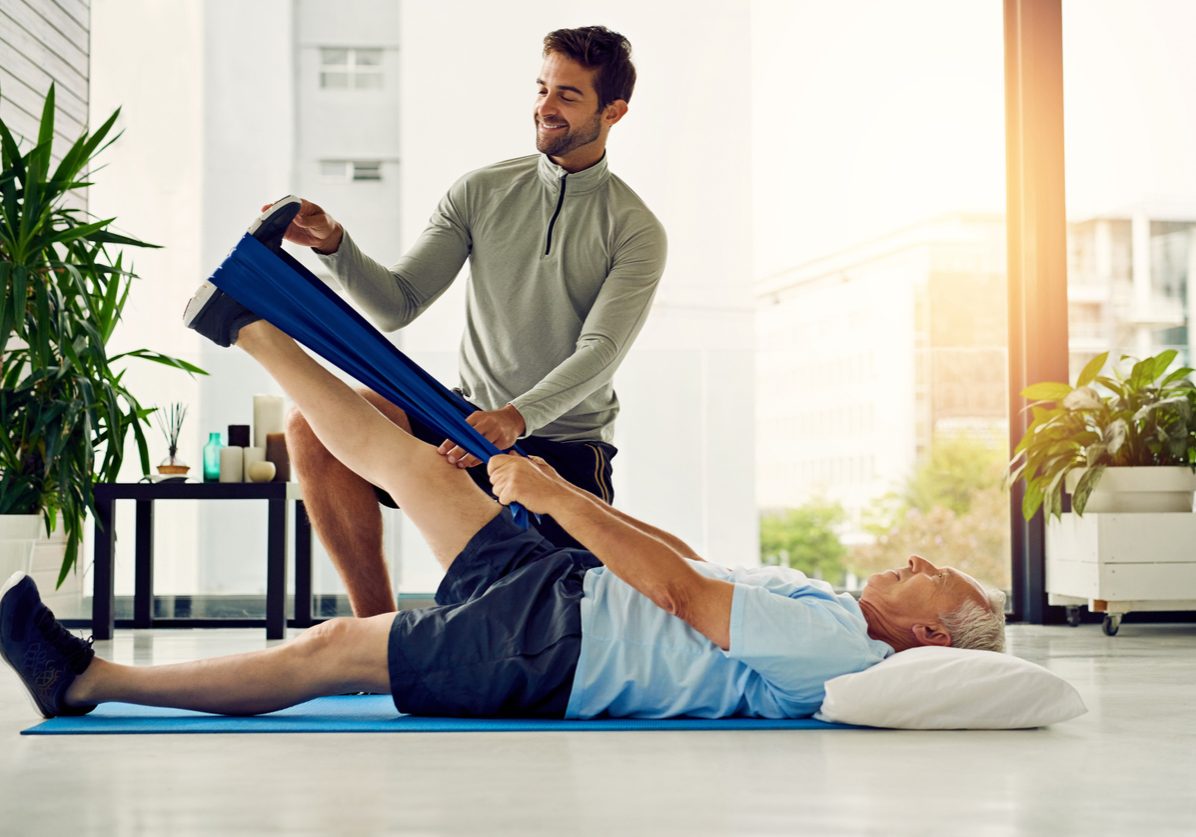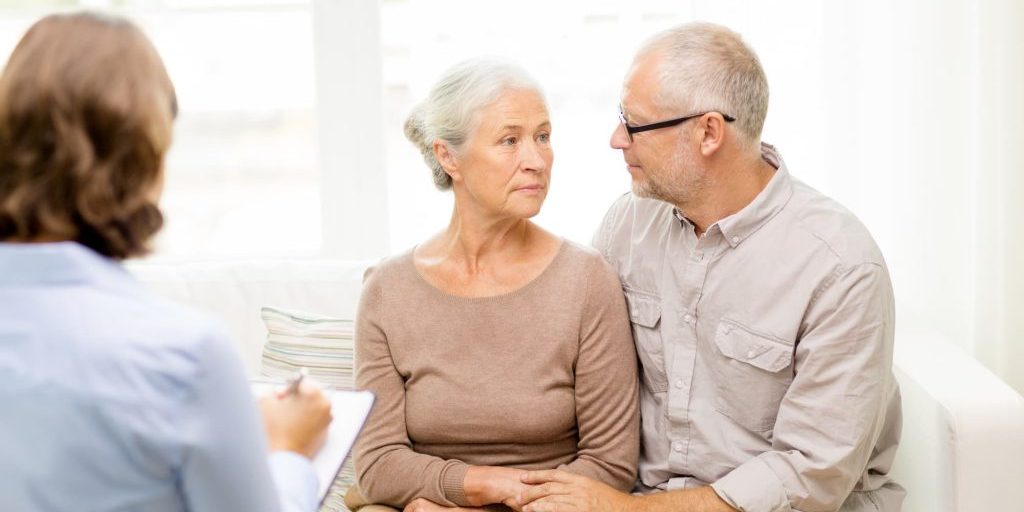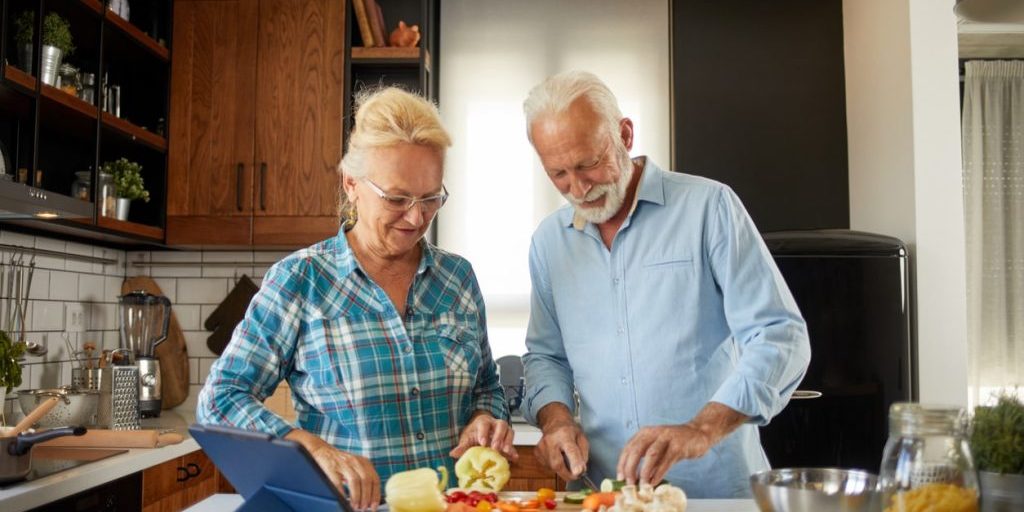Falls are a significant risk to the health and wellbeing of adults in older age. The cognitive decline, balance sensing issues, and physical impairments that can come with older age or dementia, as well as muscle weakness, can make older adults more prone to falls.
So it is important to take actions aimed at preventing falls for people as they advance in age. Exercises, balance, and strength activities, as well as creating a safer environment and some medical supports, can reduce the incidence of falls1. DACS run specific classes to support people aged over 65 years, or over 50 years for First Nations people. This can all help to create a safer environment and promote ongoing confidence in people’s ability to live independently.
Why are falls a concern?
Falls are a common but significant cause of harm for older Australians. More than two out of every five hospitalisations from injury in Australia result from falls, making it the leading cause of injury hospitalisations and death, according to the Australian Institute of Health and Welfare2. There were 243,000 hospitalisations due to falls in Australia in 2020-2021.
Falls are a concern because they can result in other complications, such as bone fractures and ongoing fear of falling. As people age, the likelihood of falling increases. In fact, one in every three people aged over 65 years will have a fall each year3. The rate of falls increases with age, and those people living with bone density conditions such as osteoporosis or osteopenia. These bone conditions occur commonly as people age. Three-quarters of the Australians who live with osteoporosis are women, who are more likely to have low bone mass4.
For people who live with dementia, falls can be an ever greater risk. The cognitive and balance changes that can result from the condition may affect an individual’s ability to recognise and assess risks. Likewise, some medication side effects may result in dizziness, drowsiness or blood pressure changes, which can also increase the risk of a fall.
Reducing the risk of falls in your home
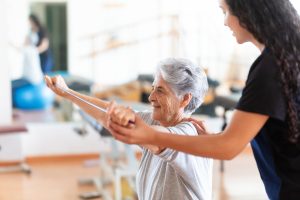 Falls can be prevented and many of the risk factors can be modified and prevented. These preventative measures are important, because falls most likely to occur in the home. Ensure living spaces are free from clutter or potential trip hazards, such as loose rugs, electrical cords and furniture obstacles. Higher chairs and armchairs make it easier to get in and out of a seating position.
Falls can be prevented and many of the risk factors can be modified and prevented. These preventative measures are important, because falls most likely to occur in the home. Ensure living spaces are free from clutter or potential trip hazards, such as loose rugs, electrical cords and furniture obstacles. Higher chairs and armchairs make it easier to get in and out of a seating position.
Adequate lighting is essential to provide clear visibility, especially for people who are experiencing cognitive impairments who may have altered depth perception. Lamps can assist.
Making sure that people wear non-slip footwear may also help, as well as using assistive devices such as walking frames, grab bars on bathroom walls or the shower or toilet, handrails and reaching aids. Personal alarms, or keeping the mobile phone handy, is recommended.
Choosing your shoes:
Stay comfortable and steady on your feet with non-slip shoes that fit well. Look for:
- A broad heel that is slightly rounded, no more than 2.5cm high (this will improve stability)
- A firm, flat non-slip sole that bends mainly at the ball of the foot
- Shoes with soles with the right amount of grip (not too slippery or not to resistant)
- A shape that conforms to your foot and is held down either by laces, Velcro and some other form of fastening
- Avoid shoes like thongs or loose-fitting slippers as these can increase your risk of falls.
How can exercises prevent falls
Regular exercise and physical activity play a vital role in preventing falls. By doing appropriate exercises, such as gentle stretching, balance training, and strength-building activities, all people – and especially those living with dementia – can help improve their mobility and stability. Exercise can be structured per individual to meet each individual’s needs
A key benefit of falls-prevention exercises is also the boost it provides to people’s self-confidence and willingness to engage in daily activities. Improved strength, balance, and coordination through exercise can reduce the fear of falling, and lead to greater independence.
Research conducted for Neuroscience Research Australia found the fear of falling could lead to a “downward spiral” for older people, who became less active, and therefore lost strength and balance.
“This inevitably means they begin to fall more often, which can lead to a loss of independence and need for care in a nursing home,” lead researcher Professor Stephen Lord said.
About half of those people who have had a fall have a subsequent fear of falling again, and one in four said they had stopped some activities5. Exercise programs should be tailored to their abilities and supervised by trained professionals to ensure safety. Additionally, encouraging regular walks and outdoor activities can enhance muscle strength and coordination, reducing the risk of falls.
Specific exercises for falls prevention
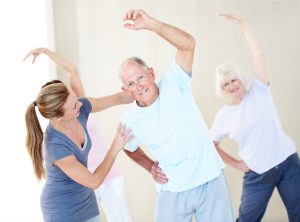
Exercises for strength and balance are important for falls prevention. These exercises can be done at home, and use either lighter weights or resistance bands. Aim for a range of different exercises to work muscles throughout the body and up to two sets eight to 12 repetitions.
DACS physiotherapists recommend starting with seated leg extensions, using an ankle weight or resistance band if necessary, and a seated row, again using a band to make it more challenging if that is the right level for you.
Calf raises, sit-to-stand exercises, hip extensions and side-hip strengthening are also advised. As people become more confident in these exercises, their strength and general function, add in other elements. This could include slow marching on the spot, perhaps against the wall or holding onto a bench, and triceps pulls with resistance bands, bicep curls, hamstring curls and wall push ups.
DACS Get Up & Stay Up program
DACS runs the Get Up & Stay Up program to support people living with dementia and older Australians to boost their health and wellness.
The program runs for eight weeks. The program was created by a Physiotherapist and an Exercise Physiologist and is aimed at increasing confidence and independence as well as strengthening and balancing exercises. We cover different aspects of falls prevention and how to retain your independence as you age. Importantly, we will show you how to do the exercises properly and monitor your progress to make sure you get the most out of the course.
For CHSP funded clients we run 8 group sessions at $5 client contribution per week. Home Care Package Clients are charged $30 per visit.
Find out more about our services at Dementia and Aged Care Services.
1 RACGP, Falls Prevention, Australian Family Physician, 2012, December, https://www.racgp.org.au/afp/2012/december/falls-prevention, accessed May 2023
2 AIHW, Injury in Australia: Falls, https://www.aihw.gov.au/reports/injury/falls, accessed May 2023.
3 Australian Commission on Safety and Quality in Healthcare, Preventing Falls and Harm From Falls in Older People Best Practice Guidelines for Australian Hospitals, 2009, https://www.safetyandquality.gov.au/sites/default/files/migrated/Guidelines-HOSP.pdf, accessed May 2023.
4 Cawthon, P., “Generder Differences in Ostroporosis and Fractures”, Clonical Orthoaedics and related Research, 2011, Jan 25, https://journals.lww.com/clinorthop/Fulltext/2011/07000/Gender_Differences_in_Osteoporosis_and_Fractures.16.aspx, accessed June 2023.
5 Australia and New Zealand Falls Prevention Society, Info about Falls, https://www.anzfallsprevention.org/info/
